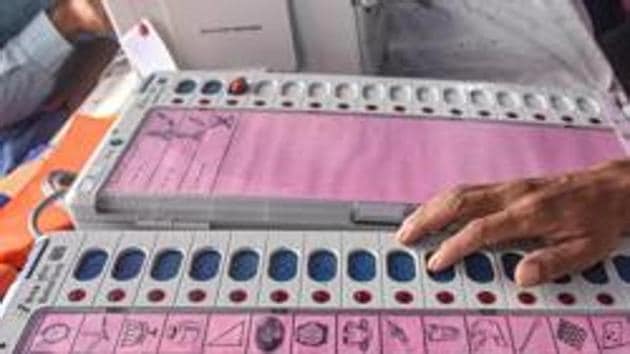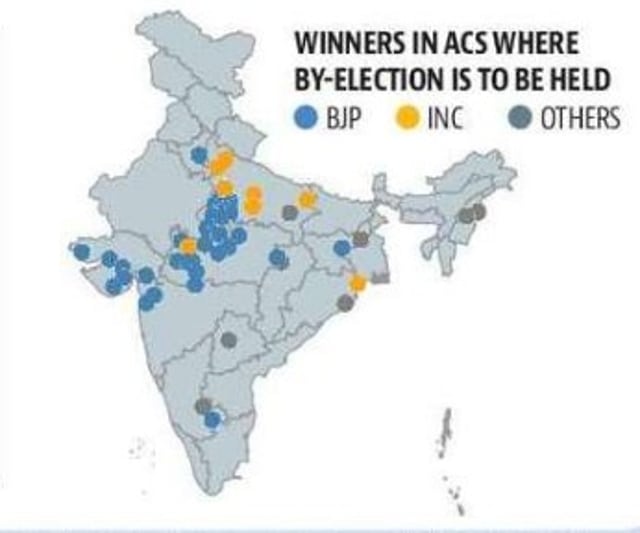Phase 2 of Bihar: What’s at stake today?
The polls are being held in 94 assembly constituencies in the second phase, higher than the number in the other two phases. The region is also home to 38% of the state’s overall population and about 48% of its urban population.
94 of the 243 assembly constituencies (ACs) in Bihar go to polls on Tuesday, in the second phase of the ongoing assembly elections in the state.

Larger population, higher urbanization
The second phase is the biggest of the three phases. The polls are being held in 94 ACs, higher than the number in the other two phases. The region is also home to 38% of the state’s overall population and about 48% of its urban population. Of the eight ACs in Bihar where more than 80% of the population lives in urban areas, five go to polls in the second phase. These include all four ACs in capital Patna – Patna Sahib, Bankipur, Kumhrar and Digha – and Bhagalpur.
Click here for full Bihar assembly elections 2020 coverage
This urban skew makes the second phase crucial for the Bharatiya Janata Party (BJP), which has historically performed better in urban constituencies. In the two assembly and three Lok Sabha elections in Bihar since 2009, the median vote share of the BJP has been higher in more urban ACs. The other big parties have performed better in the less urban ACs.
The anti-incumbency factor
The second phase will also test the anti-incumbency factor in Bihar more . The JD(U) government has ruled the state for the last 15 years. The BJP has been a partner in the government for most of this time. About 53% seats polling in the second phase were won by the JD(U) or the BJP in the 2015 assembly elections. The share of such seats was nearly 44% in the first phase and will be 55% in the third phase. Of all the seats won by the two parties in 2015 (when they were not partners; they came together in 2017), 40% go to polls Tuesday. The second phase has 42 ACs where the same party won in the last two assembly polls. Of them, 34 were won by the JD(U) and the BJP. All thirteen ACs in the home districts of chief minister Nitish Kumar (Nalanda) and Rashtriya Janata Dal leader Tejashwi Yadav (Gopalganj) go to the polls in this phases as well.
The Covid-19 factor
Large parts of the three worst-affected districts in terms of the confirmed Covid-19 cases are going to polls in the second phase. These three districts – Patna, Muzaffarpur and Bhagalpur – account for about a quarter of the confirmed Covid-19 cases in Bihar. There are 32 ACs in these three districts, 19 (or 60%) of which are going to polls in the second phase. It is highly likely that most of the cases in Patna and Bhagalpur districts are confined within the boundaries of the Patna and Bhagalpur cities.
By-elections
By-elections to 54 assembly constituencies across ten states will also be conducted on Tuesday. These are crucial for two reasons.
Madhya Pradesh government at stake
Of the 54 constituencies going to polls, 28 are in Madhya Pradesh; 25 of these fell vacant after elected members of the Congress defected to the BJP, a move that resulted in the collapse of the Congress government in the state. The BJP currently has 107 members in the Madhya Pradesh assembly (including the speaker), nine short of an absolute majority. The Congress has 87 members. The current strength of the assembly (following a late-October resignation by a Congress legislator) is 229. Seven seats are held by others.
A test for Congress elsewhere as well
In the 26 seats outside Madhya Pradesh that are going to polls, the Congress won 11 (or 42%) in the last election. These constituencies include eight from Gujarat and one each from Haryana, Jharkhand and Karnataka. When one includes the 28 seats of Madhya Pradesh, the Congress won 38 of the 54 seats (or 71%) in the last election.







